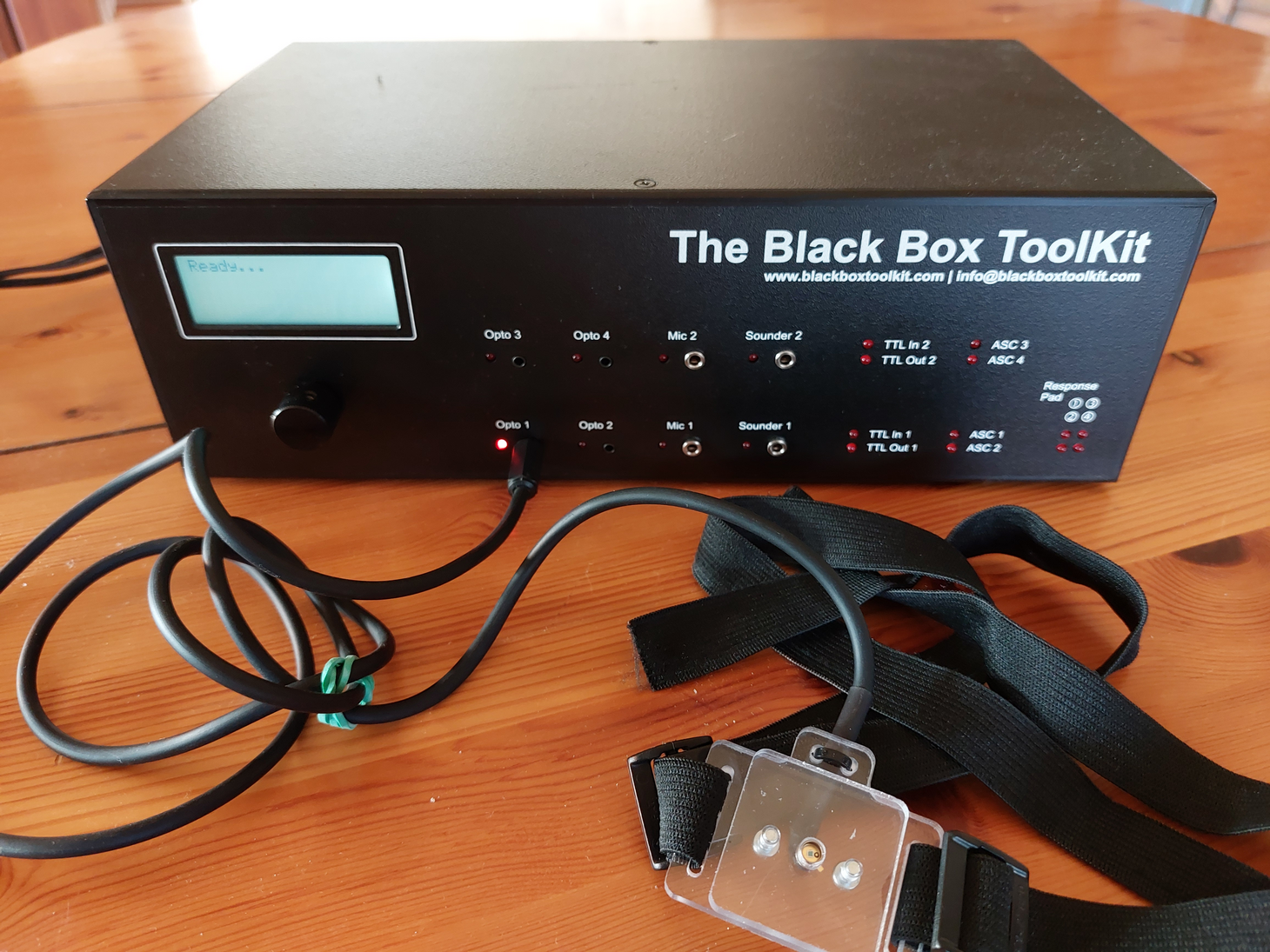Acquiring timing data using the bbtkv2 python module

- The BlackBox ToolKit v2 is a device that allows psychologists to
measure the timing of audio-visual stimuli with sub-millisecond accuracy. It replaces a digital oscilloscope (capturing activity on sound and visual sensors, or TTL signals) and a signal generator (generating sound or TTL signal. (See https://www.blackboxtoolkit.com/bbtkv2.html for more information) [1].
The principle of operation is simple. Three pieces of equipement are needed:
A stimulation device (typically a computer)
The bbtkv2 with input sensors (photodiodes, sound detectors, TTL detectors) attached to the stimulation device.
A host computer driving the bbtkv2 (hooked to it via a USB cable).
Note
The stimulation PC and the host PC can be the same computer (but do not have to). As data are recorded asynchronously by the BBTKv2, it is possible for a single PC to switch the BBTKv2 into “capture mode”, launch the stimulation program and, when done, download the timing data from the BBTKv2 memory.
Note
Under Windows, you need to install a driver to communicate with the BBTKv2. You can install the mbed-cli available from https://os.mbed.com/docs/mbed-os/v6.16/quick-start/build-with-mbed-cli.html a,d check install driver during the setup.
The BBTKv2 and the host PC communicate via a serial protocol over USB. The bbtkv2 Python module provided here encapsulates (some of) the commands documented in The BBTKv2 API Guide sold by the parent company.
For example, one of the most useful commands, capture(), monitors
the input sensors for a certain time period and records all changes on
any input line (raising or falling closing edges). Once the capture
period has elapsed, the BBTKv2 sends the list of all the events,
timestamped, to the host computer.
Installing the Python module
Just run:
pip install bbtkv2
(Note: Should the pip command not work, just copy bbtkv2.py, and make sure you have the pyserial module installed)
Using the module
Configuration
To use the module you need to know two thing:
The name of the serial port associated to the BBTKv2.
On most Linux system, it will be
/dev/ttyACM0(which can be identified by running thedmesgcommand just after plugging the BBTKv2).the baudrate, that is, the speed of transmission of information over the the serial connection.
When you plug the BBTKv2 in, a USB storage device named
BBTKV2is mounted, which contains a fileBBTK.inispecifying this parameter. On my computer:$ cat BBTKV2/BBTK.ini [BaudRate] 57600
Then, you can create a bbtkv2.toml configuration file such as the one below (change the serialport and baudrate variables according to your setup. For example, under Windows, serialport might be COM3):
serialport="/dev/ttyACM0"
baudrate=57600
debug=1
[thresholds]
Mic1=100
Mic2=0
Sounder1=63
Sounder2=63
Opto1=110
Opto2=0
Opto3=0
Opto4=0
[smoothing]
smoothing='11000011'
You will modify the thresholds and smoothing parameters later if needed (read the official documentation of the bbtkv2).
Using the bbtkv2 module to capture events
Launch ipython and type:
import bbtkv2
BBTK_CONF_FILE = "./bbtkv2.toml" # change to the conf file you created
bb = bbtkv2.BlackBoxToolKit(BBTK_CONF_FILE)
bb.adjust_thresholds() # adjust the thresholds manually
bb.clear_timing_data() # clear the internal memory of the BBTKv2
text = bb.capture(30) # start capturing events for 30sec
# convert the results into human readable formats:
df1 = bbtkv2.capture_output_to_dataframe(text)
processed_events = bbtkv2.capture_dataframe_to_events(df1)
print(processed_events)
If things do not seem to work, you may first to test that the link with the bbtk2 works correclty by running an interactive serial communication software. This procedure is described for Windows in The BBTKv2 API Guide using TeraTerm VT. In the next chapter, we explain how to perform the same test under Linux, using minicom.
For example, if you notice that the transmission is garbled, you should decrease this speed in the BBTK.ini file and reboot the BBTKv2 box.